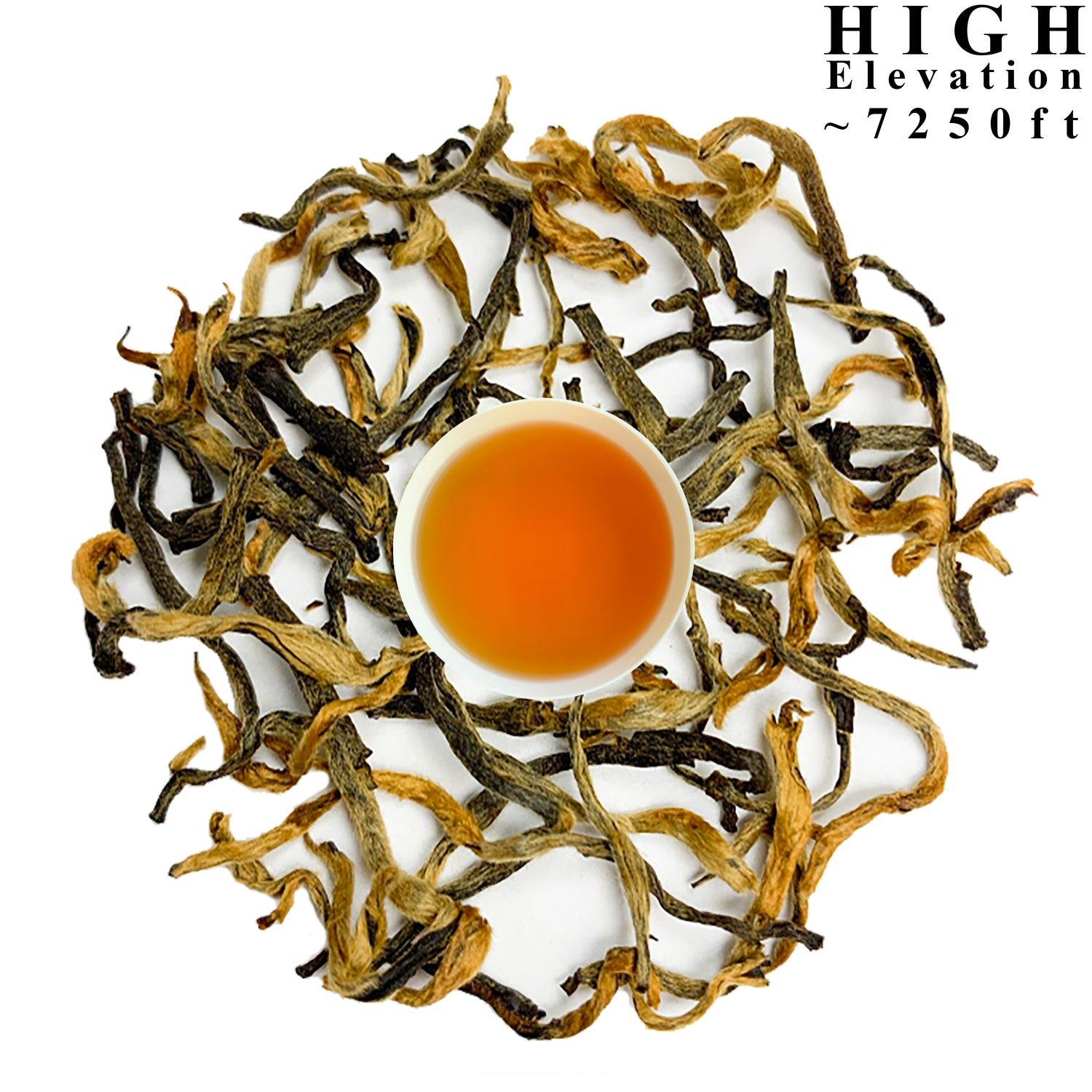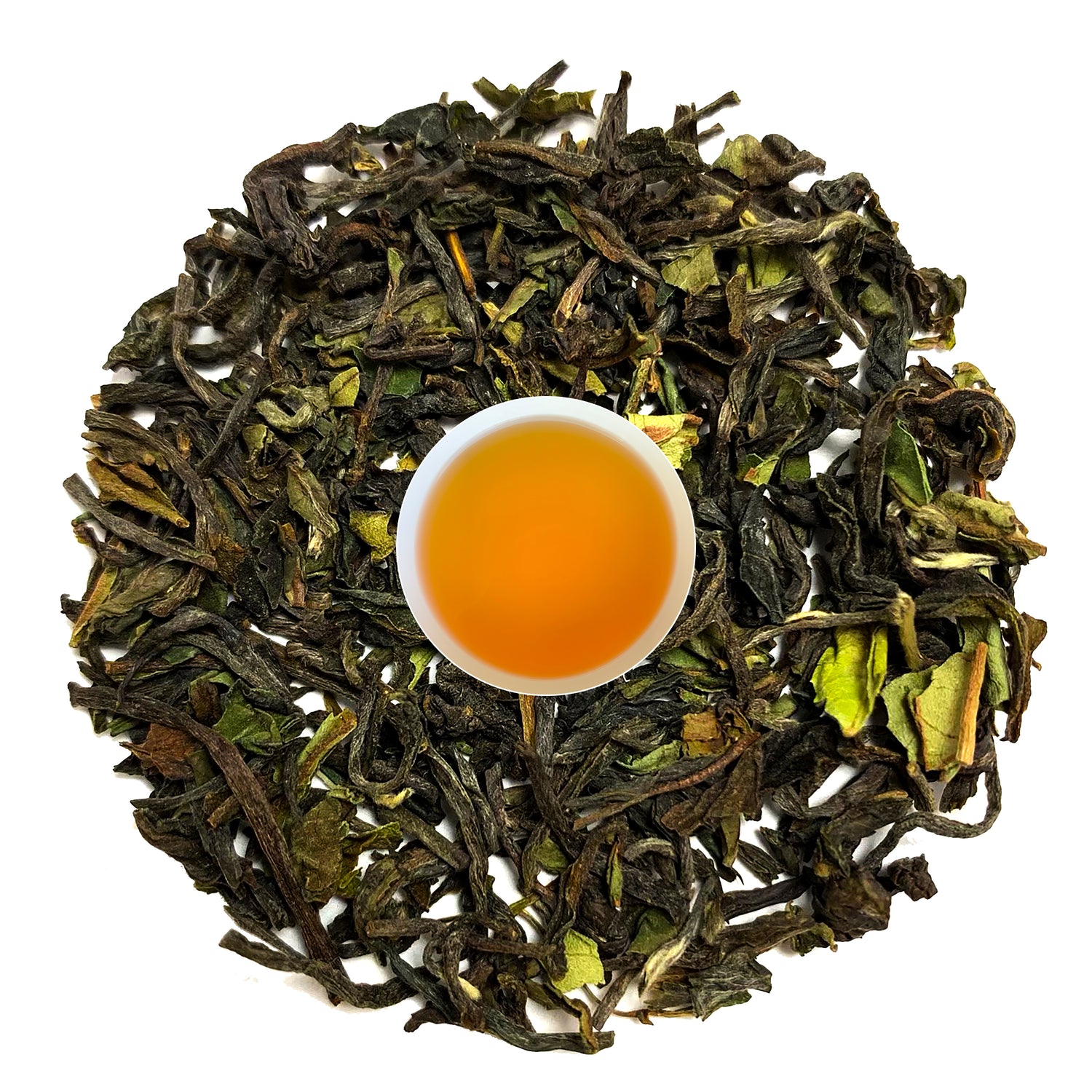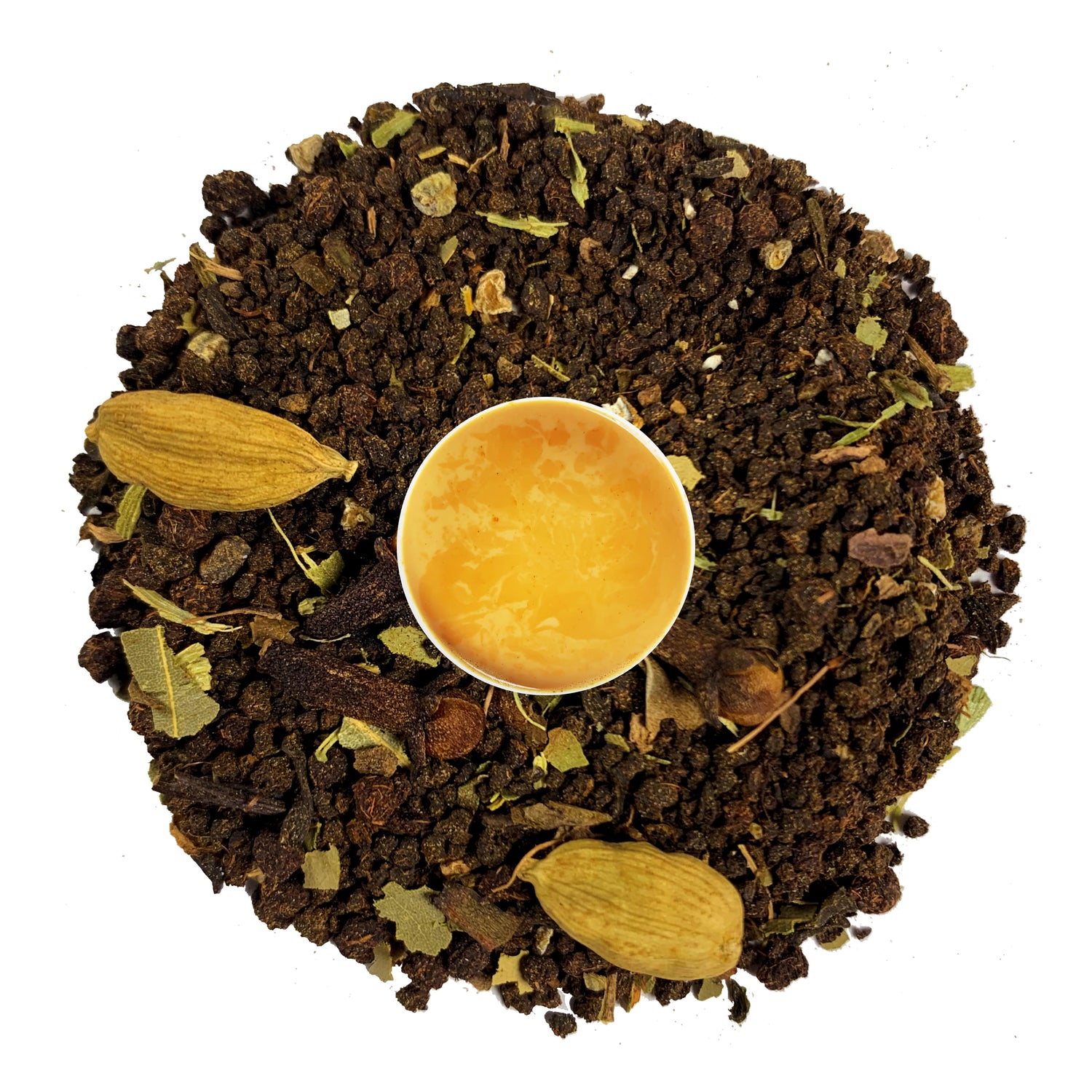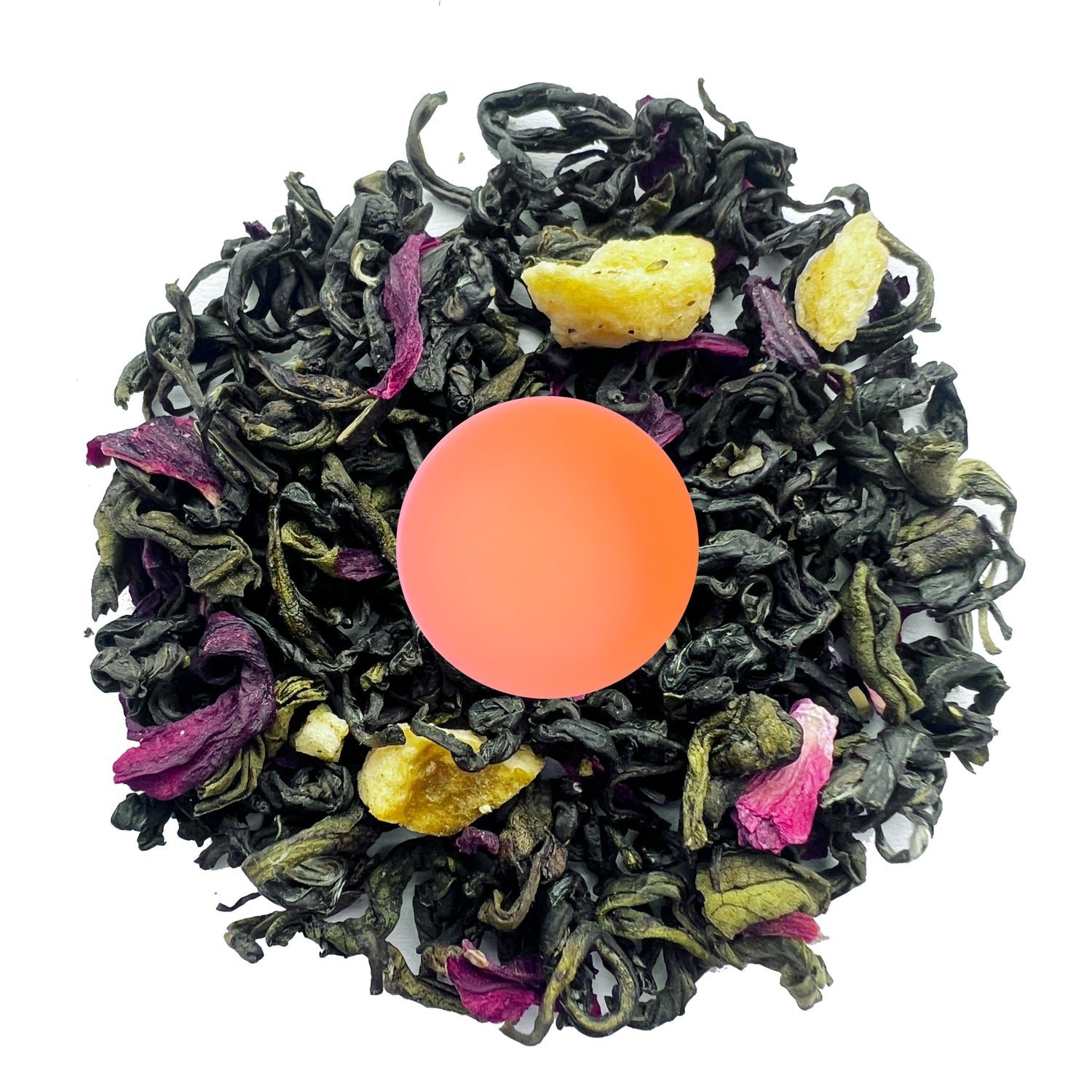
Rare Teas: Exclusive White Tea & Minimal Processing for Connoisseurs
There's something almost reverent about white tea. Maybe it's the silvery-white buds covered in fine downy hairs. Maybe it's knowing that only the youngest, unopened buds are hand-picked during a brief window in early spring. Or perhaps it's the understanding that white tea is the least processed of all true teas, allowing it to retain the highest levels of beneficial compounds.
Whatever it is, white tea commands attention—and respect. It's not a tea you gulp down without thinking. It's a tea that asks you to slow down, pay attention, and appreciate the subtlety that comes from minimal human intervention.
Today, we're diving deep into the world of white tea: why it's so rare, how minimal processing preserves its extraordinary benefits, and why autumn flush white teas deserve a special place in every connoisseur's collection.
One Leaf & a Bud: The Gentle Art of Harvesting White Tea
The story of white tea begins not in a processing facility, but in the tea garden at dawn. The tea buds are handpicked during a short harvesting period, typically in late March to early April, when the plant first awakens from winter dormancy.
The Perfect Moment
Timing is everything with white tea. The buds must be plucked at just the right maturity—when they're still unopened and covered in those characteristic silvery-white hairs. Too early, and the buds lack development. Too late, and they begin to unfurl, losing their precious "tippy" quality.
An expert tea picker usually collects around 250 grams of silver tips in a day. Think about that: a full day's work yields just half a pound of unprocessed tea. It takes about 5 kilograms of freshly picked tips to produce just one kilogram of finished Silver Needle tea.
This explains why authentic white tea, particularly Silver Needle, commands premium prices. You're not just paying for tea—you're paying for hundreds of hours of careful, skilled labor.
The Importance of Those Silver Hairs
Those fine white hairs aren't just decorative. They're called "trichomes," and they serve as the plant's natural defense mechanism, containing compounds that protect the tender new buds. When you see dense, silvery coverage on your white tea buds, you know you're looking at tea that was plucked at the peak of freshness.
These buds must be picked in dry weather to prevent bruising, and they're carefully protected throughout harvest and processing to preserve their delicate structure.
Why Minimal Processing Preserves Maximum Antioxidants
Here's where white tea gets really interesting from a health perspective. While other teas undergo withering, rolling, oxidation, and firing, white tea takes a radically different path.
The Simplest Process, The Purest Result
White tea processing involves minimal handling. After harvest, the buds are simply withered and dried naturally, with minimal oxidation. That's it. No steaming. No rolling. No forced oxidation.
The harvested buds are spread out on wooden or natural cane surfaces and dried under filtered sunlight at dawn. This process is done under intense scrutiny for a short time each day for about 4 or 5 days. When weather doesn't cooperate, the process can be done indoors with artificial warmth, though sun-withered tea is considered superior.
The withering process is limited to no more than 72 hours to prevent over-oxidation. The longer tea is exposed to oxygen, the darker its leaves become. By keeping oxidation minimal, white tea maintains its pale color and delicate flavor.
The Antioxidant Advantage
This minimal processing has profound implications for health. White tea is the least processed of all true teas, resulting in the highest concentration of polyphenols and antioxidants.
The amount of antioxidants in white tea is three times higher than in other teas. White tea contains particularly high levels of catechins, especially EGCG (epigallocatechin-3-gallate), which is considered one of the most powerful antioxidants found in nature.
Scientific analysis shows that Silver Needle white tea contains baicalin, kaempferol, kaempferide, quercetin, isorhamnetin, lespenephryl, and rutin—a impressive roster of beneficial compounds. These flavonoids showed strong scavenging ability for both DPPH and ABTS free radicals, which are markers of antioxidant activity.
Unique Flavor Profiles in Rare White Teas
Minimal processing doesn't just preserve health benefits—it creates flavor profiles that are impossible to replicate with more heavily processed teas.
Silver Needle: The Emperor's Tea
Silver Needle, known as Baihao Yinzhen in Chinese, is the most prized white tea. Made exclusively from the young, tender buds of the Camellia sinensis plant, it offers a complexity that belies its delicate appearance.
Silver Needle is characterized by slender, silvery-white buds covered in fine hairs, giving it a needle-like appearance. The tea offers a light, sweet, and floral flavor with a smooth, velvety texture. Its aroma is delicate, often described as fresh and slightly fruity.
What makes Silver Needle truly special is how it evolves. The fresh silver needle leaf is slightly olive in color, while aged silver needle has a deep green color with a reddish-brown tone. Silver Needle tea gets better with time in terms of flavor. If stored properly, its quality improves with time, and its medicinal values increase when stored in good condition for about 2-3 years. The flavor with time gets smoother and deeply mellow with a strong honey aroma.
White Peony: Fuller Body, Accessible Price
White Peony is made using the top two leaves along with the bud. White Peony teas have a stronger taste profile than Silver Needle. Complex flavors blend flowery notes with a full-bodied feel and a slightly nutty finish.
This white tea is also considered a good budget buy compared to Silver Needle as it's cheaper and still offers a fresh, robust flavor. White Peony tea is more pale green and gold than its pricier alternative, making it an excellent introduction to white tea for those new to the category.
Nepal's Hidden White Tea Treasures
While China's Fujian province is the traditional home of white tea, Nepal's high-altitude gardens are producing exceptional white teas that deserve recognition. Our Mt. Pumori Special White Tea exemplifies what happens when white tea processing meets Himalayan terroir.
Grown at elevations between 5,000-7,000 feet, these white teas benefit from cool mountain air, intense sunlight, and mineral-rich soil. The result is a tea with the characteristic delicacy of white tea enhanced by the complex flavor development that only high-altitude growing can provide.
For those seeking an even rarer experience, our Silver Needle Tea offers the ultimate expression of white tea craftsmanship—pure, unblended, and exquisitely refined.
White Tea for Skin Health and Anti-Aging Benefits
If you're interested in white tea purely for flavor, the health benefits are a bonus. But if you're exploring white tea for its potential anti-aging properties, the science is genuinely impressive.
Antioxidant-Powered Anti-Aging Properties
Research from Kingston University tested 21 plant and herb extracts and found white tea considerably outperformed all of them in protecting structural proteins of the skin.
The study focused on two critical proteins: elastin and collagen. Elastin is responsible for maintaining elasticity of the skin and aids in wound repair. Collagen supports the skin's strength and elasticity. The breakdown of these two proteins leads to age-related wrinkles and sagging skin.
Researchers found that white tea helped prevent this breakdown, which could mean stronger, suppler skin. What's remarkable is that the amounts of white tea used in the experiments were far less than one would typically consume in beverage form.
The Collagen Connection
Another study found that white tea extract blocked the enzymes that break down collagen and elastin. Specifically, white tea demonstrated anti-collagenase and anti-elastase activities superior to other plant extracts tested.
These enzymes are major contributing factors for wrinkles and sagging skin. By inhibiting them, white tea can slow down the aging and wrinkling process.
Research on animals showed even more impressive results. A study on mice found that white tea flavonoids reduced liver, kidney, and lung damage in mice with induced aging. The tea effectively increased antioxidant levels and reduced inflammation markers.
UV Protection and DNA Preservation
When applied to skin, white tea can prevent UV-induced skin damage and protect DNA cells from damage caused by solar radiation. White tea restored the function of Langerhans cells, a key part of the immune system that's very sensitive to sun damage.
Studies comparing different teas found that the anti-wrinkle activity of white tea and black tea is equally greater than that of green tea. This is particularly noteworthy given green tea's reputation as a health beverage.
Incorporating White Tea into Beauty & Wellness Routines
Understanding science is one thing. Using white tea effectively is another. Here's how to make white tea a cornerstone of your wellness routine.
Drinking White Tea for Internal Benefits
Drinking white tea regularly helps protect skin from free radical damage and fights skin aging. White tea is rich in antioxidants that neutralize free radicals, reducing oxidative stress and preventing premature skin aging.
For maximum benefits:
-
Drink 2-3 cups of white tea daily
-
Use water around 160-175°F (70-80°C) to preserve delicate compounds
-
Steep for 3-5 minutes, adjusting to taste
-
Consider drinking your first cup on an empty stomach in the morning for optimal absorption
Our Mt. Pumori Special White Tea is USDA certified organic, ensuring you get pure, pesticide-free tea with maximum health benefits.
Topical Applications
Beauty products containing white tea extract help protect skin from free radical damage and improve its appearance. You can also create simple home treatments:
White Tea Toner:
- Brew a strong cup of white tea (double the normal amount)
- Let it cool completely
- Pour into a spray bottle
- Use as a facial mist or apply with cotton pads
- Store in refrigerator for up to one week
White Tea Face Mask:
- Brew 2 tablespoons of white tea in ¼ cup hot water
- Let steep for 10 minutes, then strain
- Mix the tea with 2 tablespoons honey and 1 tablespoon plain yogurt
- Apply to clean face, leave for 15-20 minutes
- Rinse with cool water
Building a Complete Routine
The polyphenols and flavonoids in white tea help strengthen collagen and elastin in the skin, which contributes to improved elasticity and firmness. For comprehensive anti-aging benefits:
Morning:
- Start with a cup of white tea before breakfast
- Use white tea toner after cleansing
- Follow with your usual serums and moisturizer
Afternoon:
- Second cup of white tea (can be iced in summer)
- Refresh with white tea facial mist if desired
Evening:
- Final cup of white tea after dinner
- White tea mask 2-3 times per week
- White tea toner before night cream
Understanding the Autumn Flush: How Cool Air Concentrates Tea Flavor
While spring white teas get most of the attention, autumn flush white teas offer something unique—and often underappreciated.
The Science Behind Autumn Flush Tea
The autumn flush usually begins in late October and continues into November, after the monsoon has withdrawn and temperatures begin to drop. This is the shortest of the harvests, lasting just 30 days or so.
The leaves that grow at this time develop under clearer skies and cooler nights. This shift in climate creates a slower growth cycle, which influences the final profile of the tea.
Here's the fascinating part: cooler temperatures lead to slower growth, and consequently, a higher concentration of flavorful compounds in the leaves. The bushes store nutrients during the monsoon months, and these reserves influence the leaves that sprout after the rains have passed.
Cooler nights slow down biochemical reactions within the leaf, and this shift creates a different set of compounds that appear during withering and oxidation.
During autumn, the weather in tea-growing regions is cool and dry, with significantly reduced rainfall compared to the monsoon season. Clear skies and lower humidity levels allow the tea leaves to develop slowly, concentrating their flavors and aromatic compounds.
How Seasonal Harvests Affect Taste and Aroma
Autumn flush white tea offers a robust, earthy flavor with pronounced autumnal notes. They may have a mellow sweetness with hints of dried fruits and spices, creating a warm and comforting brew.
While spring white teas are prized for their ethereal, floral delicacy, autumn white teas offer smooth, mellow flavors with subtle sweetness. The unique climate during this period gives the tea its distinctive taste.
In autumn, nature starts to weaken, washing out the summer flavor, and offering airy and light taste. However, autumn teas are noted for their balanced, more mature flavors, offering deeper taste complexity than the fresher spring and summer harvests.
Autumn teas from high-altitude regions carry a firmer structure and a more settled aroma compared to earlier flushes. The character does not rely on vivid notes but presents a layered structure that rewards slow tasting.
Why Autumn Flush Deserves Your Attention
Many of India's top tea experts point to autumn flush as their personal favorite, yet these teas remain largely unknown and nearly impossible to find.
Why the scarcity? With less quantity from this final harvesting period, only a limited amount makes it to public auction. Gardens generally sell their autumn flush privately to exporters and a few online retailers and tea boutiques.
For connoisseurs willing to seek them out, autumn flush white teas offer complexity that spring harvests can't match. The concentrated flavors, developed slowly in cool mountain air, create a drinking experience that's deeply satisfying in a completely different way.
Our Himalayas Best White Tea captures this autumn character beautifully, offering the mellow sweetness and layered complexity that makes seasonal white teas so special.
Brewing White Tea: Getting the Most from Minimal Processing
Even the finest white tea can disappoint if brewed incorrectly. Here's how to do it right.
Water Temperature Matters
Use fresh, filtered water heated to around 75-85°C (167-185°F). Boiling water will destroy the delicate compounds in white tea.
The precise temperature matters because white tea's delicate compounds are sensitive to heat. Too hot, and you'll extract bitter tannins while destroying beneficial catechins. Too cool, and you won't extract enough flavor.
For best results:
- Silver Needle and premium white teas: 160-170°F (70-77°C)
- White Peony and robust white teas: 175-185°F (79-85°C)
Steeping Time and Ratio
Steep 1-2 teaspoons of tea buds in hot water for about 3-5 minutes. The resulting infusion should be a pale, golden color with a light, floral aroma.
White tea is forgiving—it's difficult to over-steep. However, starting with 3 minutes and adjusting to taste is wise. Some premium white teas benefit from slightly longer steeping (4-5 minutes) to fully develop their complexity.
Multiple Infusions
High-quality white tea rewards multiple infusions. After your first steep, you can re-steep the same leaves 2-3 times:
- Second infusion: Add 30-60 seconds to your original steeping time
- Third infusion: Add another 60-90 seconds
Storage for Longevity
Store tea in an airtight container away from light, moisture, and strong odors to preserve its delicate flavors and aromas. Unlike many teas that deteriorate with time, properly stored white tea can actually improve, developing deeper, more complex flavors.
The Health Benefits Beyond Skin: A Complete Picture
While anti-aging benefits get the most attention, white tea offers a comprehensive range of health benefits worthy of exploration.
Cardiovascular Support
Research suggests that white tea could support heart health, with catechins found to reduce the risk of mortality from heart disease. Tea catechins reduce absorption of "bad" cholesterol from the intestine while enhancing desirable HDL cholesterol levels.
The polyphenols in white tea can help relax blood vessels and prevent oxidized LDL cholesterol, both of which are key factors in maintaining cardiovascular health.
Cancer Prevention Potential
DNA mutations are the first step leading to cancer. White tea was found to be even more effective than green tea in inhibiting DNA mutations, and researchers concluded it might have a protective effect against cancer.
Weight Management
A study found that human fat tissue treated with white tea extract both decreased growth of new fat cells and increased the breakdown of fat already contained. Researchers believe the high levels of EGCG present in white tea explained these effects.
Catechins found in white tea can also speed up digestive processes, helping with nutrient absorption and metabolism.
Immune System Support
Studies find that white tea demonstrates antibacterial, antiviral and antifungal effects. White tea can also protect immune cells from sun damage, helping maintain immune function even under environmental stress.
Oral Health
White tea contains catechins, tannins, and fluoride that greatly contribute to tooth and gum health. Catechins fight the bacteria that form plaque, tannins protect against enzymes that wear down teeth, and fluoride is effective in tackling tooth decay.
Why White Tea Represents the Future of Fine Tea
White tea isn't just a category—it's a philosophy. It represents a return to simplicity, a respect for the plant, and an understanding that sometimes the best thing we can do is get out of the way and let nature express itself.
Sustainability and Craft
White tea requires no steaming, no rolling, no forced oxidation. This minimal processing means:
- Lower energy consumption
- Less water usage
- Reduced carbon footprint
- Greater connection to traditional methods
As consumers become more conscious of sustainability, white tea's low-impact production becomes increasingly attractive.
The Connoisseur's Choice
White tea was historically reserved for royalty and nobility. During China's Song Dynasty, young tea buds would be picked, meticulously rinsed, and ground into a white powder, producing the most elegant cup available—affordable only to the Emperor.
Today, while white tea is more accessible, it still represents the pinnacle of tea craftsmanship. Each cup connects you to centuries of tradition and countless hours of careful labor.
Terroir Expression
Because white tea is minimally processed, it expresses terroir—the unique characteristics of where it's grown—more clearly than heavily processed teas. Nepal's high-altitude white teas, for instance, taste distinctly different from Fujian white teas, even when made from the same cultivar.
This makes white tea endlessly fascinating for connoisseurs who enjoy exploring how geography, climate, and soil affect flavor.
Building Your White Tea Collection
Ready to explore white tea seriously? Here's how to build a collection that










